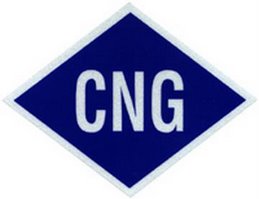NGV Industry in a World of Rising Oil Prices
Source - Dr Garth Harris, Secretary-General IANGV
Thursday, 13 March 2008
It would appear that the price of oil is going to be $100 per barrel
or more for the foreseeable future. As it's recent meeting, OPEC
decided that while it is not going to cut production, it will not
increase it. It would also appear that there is likely to be a
downturn in the economies all the developed countries which will
naturally lead to reduced demand for oil. However the demand for oil
is increasing in Asia which at least to some extent will counteract
the reduced demand for oil in other parts of the world. In addition
there is some doubt of the ability of OPEC to increase production.
The other part of the equation is the amount of oil which is
available. The BP Statistical Review of World Energy June 2007
www.bp.com gives world oil reserves as 1371 trillion tonnes. This is
the amount of oil in known fields which it is estimated can be
recovered under existing economic and production conditions. The
reserves to production ratio is 41 years. Back in 1980, reserves
were 667 trillion tonnes and have risen fairly steadily since then.
Natural gas on the other hand has known reserves of 1629 trillion
tons of oil equivalent, that is slightly more than oil reserves.
However the reserves to production ratio is significantly higher at
63 years. Natural gas reserves have more than doubled since 1980.
Another issue of rising importance is the increase in price of
commodities, particularly food. This has been brought about by the
drive to convert food crops into energy products such as ethanol and
at least in part promoted by subsidies.
In many countries where there are natural gas reserves, natural gas
supply is likely to be little impediment to the establishment of a
NGV industry. The amount of natural gas which is likely to be used
over say the first 5 years would be very small compared with other
uses of natural gas.
Secondly, the vehicles that would be using natural gas will vary from
country to country. Most large NGV countries have fleets dominated
by light duty vehicles. However heavy duty vehicles are likely to be
of interest in some countries. For instance, heavy duty trucks and
city buses are popular in NGV fleets in countries such as US, UK.
The Port of Long Beach, California is requiring all vehicles
operating in the port to operate on clean fuels by 2012. Heavy
vehicles use large quantities of gas and vehicle manufacturers can
supply new, reliable vehicles. Readers of NGV Global will have seen
articles concerning availability and fleet conversion.
I recently visited Iran to find that with all its oil resources it
has a program to convert all its vehicles, light duty and heavy duty,
to natural gas. Very shortly, only NGVs will be manufactured in
Iran .
Thirdly, natural gas and biomethane are the same fuel. One is
fossil, the other is renewable. Thus establishment of a CNG industry
based on natural gas can lead directly to use of biomethane in
transport without the difficult fuel related problems that face some
other biofuels. This can be regarded as part of the pathway to
hydrogen which is a gaseous fuel using much of the same technology as
CNG both for refueling and in vehicles.
Biomethane is of much interest worldwide at present. The most
popular sources are municipal waste treatment including sewage and
landfills. Sweden is a prominent country with several municipal bus
fleets.
Given the problems with some "renewable" transport fuels such as
ethanol, biomethane probably has a higher prospect for success than
other biofuels. While most biomethane at present is derived from
waste, it could be made at a large scale using feedstock which is not
competing with food production as in the case of ethanol and using
technologies which are largely already developed. It can be
distributed using the existing natural gas pipe network.
In conclusion, the existing NGV industry should regard the high price
of oil as an opportunity to grow. In some countries the pump price
of CNG is likely to be lower than gasoline or diesel. Natural gas is
widely available in many countries. Different types of vehicles may
be more attractive in some countries than others because of the local
conditions. Natural gas can logically lead to renewable biomethane
and even to hydrogen.
Tuesday, March 18, 2008
Subscribe to:
Post Comments (Atom)



No comments:
Post a Comment